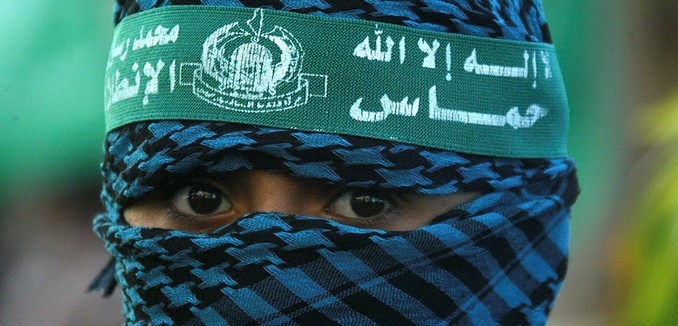As reports of the savage terrorist attack in central London March 22 emerged, it was clear pretty quickly that British authorities were dealing with an incident straight from the Islamist terror manual.
The weapons of choice in London were ordinary consumer goods that are easily refashioned for the purposes of murder. The car in which the kids are driven to school is also a makeshift tank that can be used for ramming pedestrians. The knife that chops a salad can also be a machete of sorts, used to hack down police officers and others who get in the way. This is what we saw in London this week, resembling what we saw in the French city of Nice in July 2016—where the weapon was a massive cargo truck, and the death toll was 86—and in Israel on many occasions, such as this past January, when a truck killed four and wounded 15 IDF soldiers in Jerusalem’s East Talpiot neighborhood.
Obviously, one cannot restrict the circulation of these dual purpose goods. But when these goods are used for terror purposes, they offer alarming proof that you don’t need guns or bombs to paralyze an entire city or even country. One car and one knife caused hundreds of British parliamentarians to take shelter in Westminster Abbey—one of the most potent symbols of British sovereignty, where all of the kingdom’s monarchs have been crowned for a millennium—until the police could finally declare the neighborhood safe. Those are the images that people remember.
Rolling media coverage often draws out the similarities between how terror attacks in different places are executed. More important, though, is the cause and rationale of such attacks. Away from all the immediacy and urgency that each attack brings, it becomes critical to remember the provenance, politically and ideologically, of these atrocities. Islamist terror was a factor long before the barbarians of al-Qaeda and more recently Islamic State burst upon the scene, and fanatical Islamist organizations like Al-Muhajiroun, Al Ghurabaa and Hizb ut-Tahrir have been established in the U.K. and Europe for decades.
In the Middle East, birthplace of Islamism, two of the most prominent Islamist organizations—Hezbollah in Lebanon, and Hamas in the West Bank and Gaza—have been in the terror business since the 1980s. Hezbollah has struck in Lebanon, Argentina and Bulgaria as well as deep inside Israel; Hamas has launched three wars upon Israel since the IDF withdrew from Gaza in 2005, as well as numerous bombing attacks, shooting attacks and stabbing sprees. But somehow, these two bloodstained organizations are never regarded in quite the same way as the die-hard Sunni Islamists who have brought humanitarian disaster to the Middle East and a climate of fear to the heartlands of Europe.
Repeatedly, we are told that Hezbollah, a direct proxy of the Iranian regime that is responsible for monstrous war crimes in Syria, is more accurately understood as a Lebanese political party with a “military wing,” and that political engagement is required for Hezbollah to abandon its terrorist activities—a view implying that terror is an optional tactic for Hezbollah, rather than central to its ethos.
As for the Palestinians of Hamas—spawned by the same Muslim Brotherhood whose path also leads to Islamic State—they are currently preparing a bid to convince the world of their newfound political moderation. An initiative like this one is poorly timed, as the Obama administration, which might well have been seduced, is out of office. Even so, it’s a consequence of important developments within Hamas that are worth taking note of.
Back in February, as ordinary Gazans seethed with frustration at their corrupt rulers, Hamas held its secretive internal election for a new political chief. The man selected was Yahya Sinwar, an Islamist true believer and Hamas military leader who spent more than 20 years in Israeli prisons before being released in a 2011 prisoner exchange. Sinwar’s victory is another sign that it is the military dimension of Hamas that calls the shots—not the “political wing.” The military’s primacy similarly prevails in Iran, and for Hezbollah.
With that in mind, what are we to make of the news that Hamas is developing a new political program that just might, eventually, somewhere down the line, lead to an agreement of some sort with Israel? Hamas’s reason for projecting this self-image is political; it wants to be removed from the terrorism lists of Western governments, an outcome that would conveniently allow Sinwar and his cronies to distinguish themselves from the “pure” terrorists of Islamic State.
But the vague details of this revised Hamas political program are hardly encouraging. It doesn’t override the organization’s 1988 founding charter, whose battle cry is “confronting the usurpation of Palestine by the Jews through jihad.” Akram Atallah, a Gaza-based political analyst, summarized the inner Hamas discussion in an interview with the Associated Press. “The document carries a kind of superficial change, but in fact it upholds most of Hamas’ principles,” he said. “The world recognized the PLO after it went into direct negotiations with Israel…Does Hamas agree to do the same? If yes, that’s the way for the world to accept Hamas.”
The latter part of that statement is wishful thinking. The West has not reached a stage where it is willing to legitimize Hamas in exchange for a feeble commitment to “direct negotiations.” Terror attacks like that carried out in London make such a prospect even more remote. We should expect this latest makeover attempt by Hamas to dissolve without a trace. As for the security threat it poses, that remains very much intact.
Ben Cohen is a Senior Editor at The Tower Magazine and the Director of Coalitions at The Israel Project. Publications he has written for include Commentary, The Wall Street Journal, Ha’aretz and Tablet. He writes a weekly column for JNS.org, a news agency serving the Jewish media. Follow him on Twitter @BenCohenOpinion.
[Photo: Abed Rahim Khatib / Flash 90 ]




